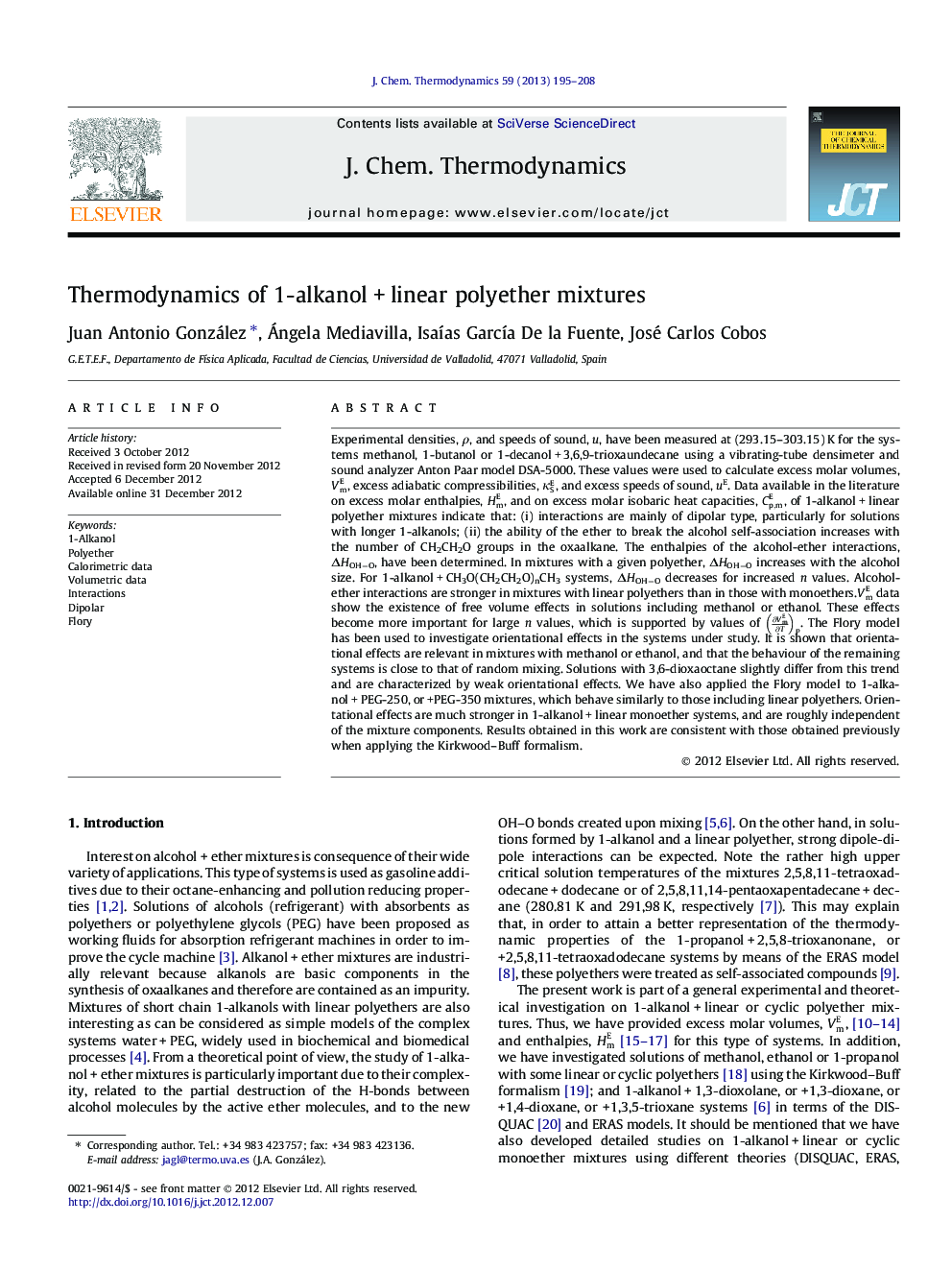| Article ID | Journal | Published Year | Pages | File Type |
|---|---|---|---|---|
| 215631 | The Journal of Chemical Thermodynamics | 2013 | 14 Pages |
Experimental densities, ρ, and speeds of sound, u, have been measured at (293.15–303.15) K for the systems methanol, 1-butanol or 1-decanol + 3,6,9-trioxaundecane using a vibrating-tube densimeter and sound analyzer Anton Paar model DSA-5000. These values were used to calculate excess molar volumes, VmE, excess adiabatic compressibilities, κSE, and excess speeds of sound, uE. Data available in the literature on excess molar enthalpies, HmE, and on excess molar isobaric heat capacities, Cp,mE, of 1-alkanol + linear polyether mixtures indicate that: (i) interactions are mainly of dipolar type, particularly for solutions with longer 1-alkanols; (ii) the ability of the ether to break the alcohol self-association increases with the number of CH2CH2O groups in the oxaalkane. The enthalpies of the alcohol-ether interactions, ΔHOH−O, have been determined. In mixtures with a given polyether, ΔHOH−O increases with the alcohol size. For 1-alkanol + CH3O(CH2CH2O)nCH3 systems, ΔHOH−O decreases for increased n values. Alcohol-ether interactions are stronger in mixtures with linear polyethers than in those with monoethers.VmE data show the existence of free volume effects in solutions including methanol or ethanol. These effects become more important for large n values, which is supported by values of ∂VmE∂TP. The Flory model has been used to investigate orientational effects in the systems under study. It is shown that orientational effects are relevant in mixtures with methanol or ethanol, and that the behaviour of the remaining systems is close to that of random mixing. Solutions with 3,6-dioxaoctane slightly differ from this trend and are characterized by weak orientational effects. We have also applied the Flory model to 1-alkanol + PEG-250, or +PEG-350 mixtures, which behave similarly to those including linear polyethers. Orientational effects are much stronger in 1-alkanol + linear monoether systems, and are roughly independent of the mixture components. Results obtained in this work are consistent with those obtained previously when applying the Kirkwood–Buff formalism.
Graphical abstractFigure optionsDownload full-size imageDownload as PowerPoint slideHighlights► Values of ρρ, u , VmE, κSE and uE are reported for CH3(CH2)n−1OH + 3,6,9-trioxaundecane (n = 1, 4, 10). ► Interactions are of dipolar type, particularly for solutions with longer 1-alkanols. ► VmE data show the existence of free volume effects in solutions with methanol or ethanol. ► Orientational effects are relevant in systems with methanol or ethanol. ► The behaviour of the remaining systems is close to that of random mixing.
